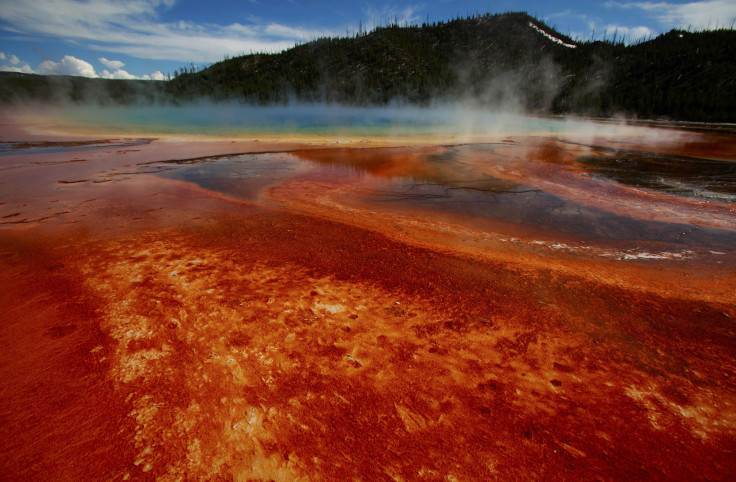Yellowstone Volcano 2.5 Times Bigger Than Previously Thought, Eruption Would Cause ‘A Lot Of Destruction’

It has long been known that Yellowstone, Wyoming’s famed national park, sits atop the largest supervolcano on the North American continent. Underneath the picturesque landscape lies a giant bubble of molten lava that, if it were to burst, would be a catastrophe of apocalyptic proportions. And to make matters worse, new analysis has found that the chamber of magma is much larger than scientists previously predicted.
According to National Geographic, a team of researchers from the University of Utah in Salt Lake City found that the chamber of lava contains between 200 and 600 cubic kilometers (47 cubic miles to 145 cubic miles) of molten rock. That’s about 2.5 times larger than previous estimates indicated. An eruption of that size would be 2,000 times the size of the 1980 Mount St. Helens eruption and would rival the largest of the Yellowstone supervolcano’s three eruptions over the past 2.1 million years, Science Recorder reported.
“We’ve been working there for a long time, and we’ve always thought it would be bigger… but this finding is astounding,” Professor Bob Smith, from the University of Utah, told BBC News. “Yes, it is a much larger system… but I don’t think it makes the Yellowstone hazard greater.”
Smith and the team studied earthquake measurement data collected from roughly 40 seismometers around Yellowstone between 1984 and 2011. They found that seismic waves were good indicators of where there was magma, because seismic waves travel slower through molten lava.
According to the U.S. Geological Survey, there have been three major eruptions of the Yellowstone supervalcano in the last few million years. The first was about 2.1 million years ago, and the second occurred 1.3 million years ago. The last major eruption was 640,000 years ago, and scientists say we’re overdue for another.
"What we're seeing now agrees with the geologic data that we have about past eruptions," James Farrell, a scientist from the University of Utah team, told National Geographic. "And that means there's the potential for the same type of eruption that we've seen in the past."
He added: "We believe it will erupt again someday, but we have no idea when.”
© Copyright IBTimes 2024. All rights reserved.






















